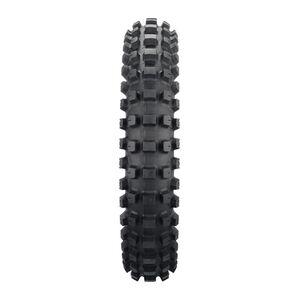Spurgeon and I had scheduled a video shoot for a fun "How to Ride" series on off-road techniques, but we had a problem.
The crank seal failed on my usual woods weapon, a 2016 KTM 300XC-W that I ride and occasionally race in hare scrambles and enduros. I just dropped $1,500 on suspension and now I have to rebuild the bottom end when I just did the top end about 20 hours ago? Needless to say, I was super bummed and didn’t really have the Benjamins to fork over for a full rebuild.
Fortunately, Spurgeon is kind of a big deal and he was able to get a Honda CRF450L for us to use so we could both get out in the woods for the fast-approaching video shoot. The upside of my mechanical problems was that I would have a chance to compare Honda's new four-stroke dual-sport to my usual ride, an off-road, two-stroke — two different approaches to getting on the trails. I was curious how the Honda would compare.
I’ll admit, I was a little skeptical after looking at the 450's spec sheet. Knowing how much of a weapon my KTM was, I really wasn’t expecting too much from the Honda. I was pleasantly surprised. Well, not at first but I’ll explain why.
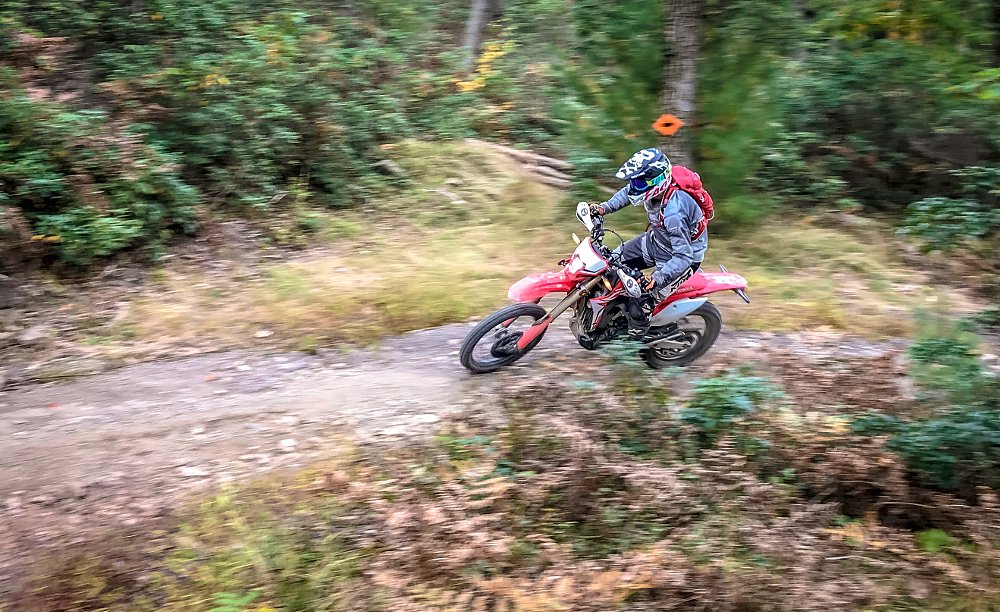
My first ride on the CRF450L
The CRF450L arrived to the office and I was eager to get some ride time under my belt. The video we were preparing required me to do a 180 Jarvis Pivot Turn that I could easily perform on my 300 two-smoker, but the 450L is quite different. Really, it was a good excuse to get out of the office and get some riding time with the new machine before our shoot date. I was able to rope Zito into coming with me the next day.
Brandon: “Hey, do you want to go ride dirt bikes with me during work hours and get paid to do it?”
Zito: “I hate motorcycles, dirt bikes especially. Can’t you see I have more Google Docs to create? Please stop asking me to do fun things during work hours.”
So, naturally, since that's not how the conversation actually went, we made our way to the trails the next day and about 30 minutes into the ride I heard this crazy metal-on-metal sound. I immediately pulled over. The bolt that holds the tailpipe to the exhaust bracket had backed out and the pipe was slamming against the swingarm. Not great.
We were able to rig up the exhaust by burning our hands and using metal carabiners to hold it in place. Lesson learned: Never leave your little bag of tools that you always take with you on the trails back at the truck. Even if you know it’s going to be a short ride just to practice a particular maneuver. Don’t be like us.
Minus that little incident, we had some fun and I was able to practice the Jarvis Pivot Turn a good bit before we made our way back to the trucks.
I really didn’t get to put the bike through its paces on this first ride because we had to get back to the office and we were running out of time. With the combination of the exhaust falling off and not having dirt-specific tires on the bike, I didn’t have the best first impression. I can’t really say I didn’t like the CRF450L because a bolt fell off, but it certainly didn’t inspire confidence. Luckily, the Hammer Run came around and made a believer out of me.
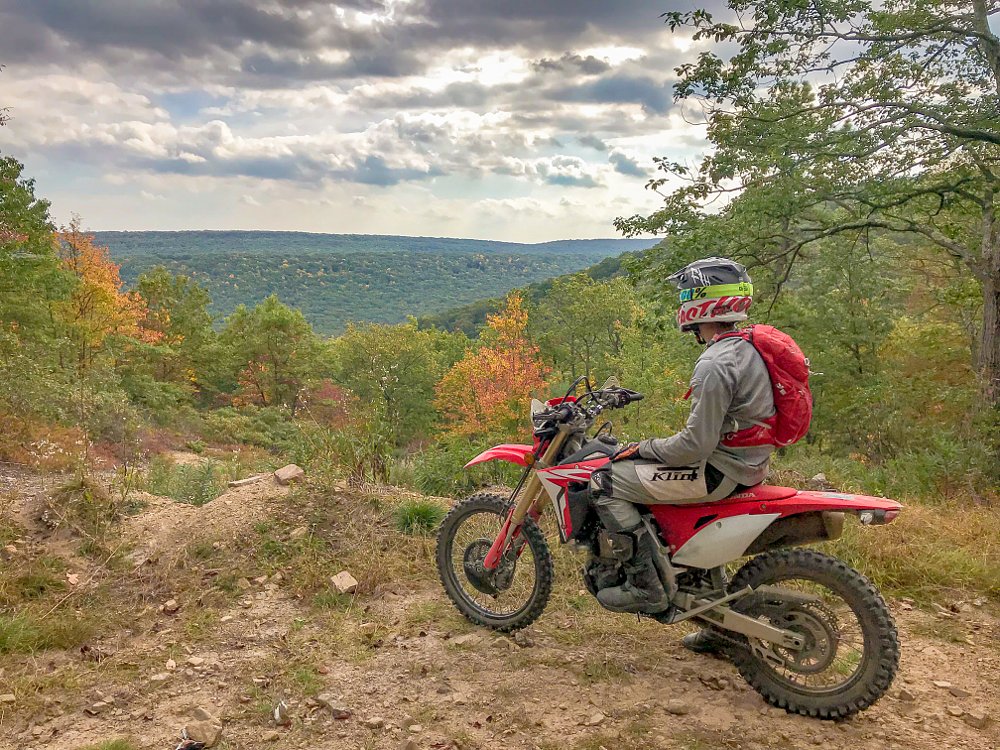
Riding the Honda CRF450L at the Hammer Run
Fast forward a few weeks, my KTM 300 is still out of commission and I had the opportunity to attend the annual Hammer Run, which is a dual-sport event featuring 80-plus miles of single-track riding. While this is technically a “dual-sport” event, it’s basically like an all-day hare scramble. It’s not a race but… everyone’s on race-ready machines and riding like there’s a trophy at the end.
I showed up with the Honda CRF450L and fully expected to get left in the dust by all my buddies — which is literally the worst. The shit talking that I knew would ensue almost made me skip the event.
After checking in and making our way to the trails, we came upon our first few miles of single-track. I started off slow, just getting used to the suspension and how the bike reacts to being pushed in these conditions and I was incredibly surprised by how well the Honda was handling the terrain. The suspension was eating up everything with ease. I never felt like the front was washing away and even through the whoops it held strong. I bottomed it out a few times, but that wasn’t anything a few clicks on the suspension couldn’t fix.
The 450L was able to get low in the gear without stalling and it tractored right through everything I was able to throw at it. I could easily loft the front end over water crossings or obstacles when needed but it never felt like it was going to get away from me. I never felt that it had too much power or that it was lacking in power. I was impressed.
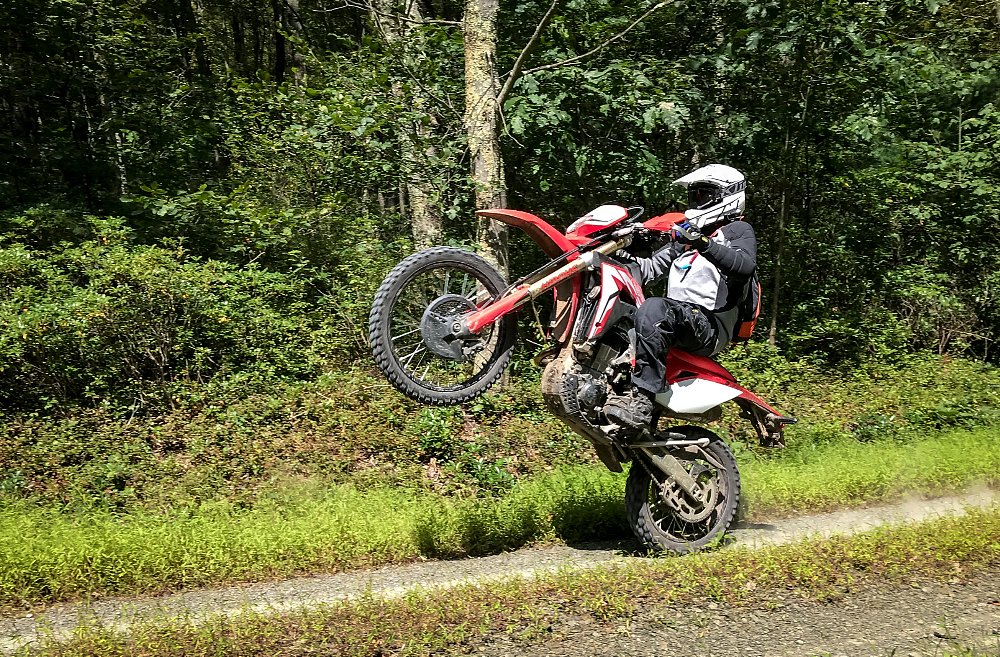
So how does Honda's dual-sport compare to a dirt bike?
Yes, I’m fully aware that comparing Honda's CRF450L four-stroke dual-sport to a KTM 300 XC-W two-stroke that's dirt-only (though I've plated mine) is not really a direct or even fair comparison. But as a 300 rider and owner, I couldn't help but make the mental comparisons and that perspective helped me assess the new Honda.
Weight is the first thing we usually think about, and the CRF450L weighs in at approximately 289 pounds, which is not bad at all, considering what’s available on the dual-sport market. My 2016 KTM 300 XC-W weighs approximately 225 pounds. That is a pretty big difference between the two but I really only felt that weight after more than 80 miles of single-track, when my arms and legs were getting toasted. For more technical single-track, the 300 will obviously have the advantage, but I tip my hat to the 450L.
The 300 has a 2.6-gallon (U.S.) tank while the CRF450L only holds 2.0 gallons. I’ve read a variety of different claims for each bike and how many miles per gallon the average rider gets. There are many variables associated with fuel mileage, especially when it comes to trail riding. I typically ride in a lot of sand, which makes my throttle hand heavy and that consumes more fuel. From my experience, I typically get about 60 to 70 miles of single-track on a tank on the 300 and I got about the same out of the CRF450L. I didn’t run the Honda dry, but the fuel light came on around the 65-mile mark. Keep in mind, the Hammer Run was mainly single-track the whole day with only a few miles of pavement to connect the trails. Most riders get a lot more miles from a tank on the CRF450L but then I am also known for turning fuel into wheelies as often as possible.
Seat height is another common question. I’m five feet, 11 inches tall, but seat height is still something I pay attention to with every bike I ride. The CRF450L has a lower seat height at 37.1 inches when compared to my 300 at 37.8 inches, but it didn’t really feel that way. The Honda felt a bit taller, but I think that was the illusion of the frame and engine feeling wider in comparison to my 300.
The one area where the Honda has a huge upper hand is streetability, and not just because it comes street-legal right from the factory. I have a license plate on my 300 but I only ride it on the street to connect trails. The CRF450L didn’t skip a beat on the tarmac and felt a heck of a lot better than my 300. The 450L was equipped with a Dunlop AT81 up front and a Shinko Cheater on the rear. Even with non-street tires, I still felt like I could ride on the tarmac all day without any hiccups. The 300 certainly doesn’t feel the same on the street. It just feels like it’s going to blow up.
Well, now that I think about it, mine did blow up, so...
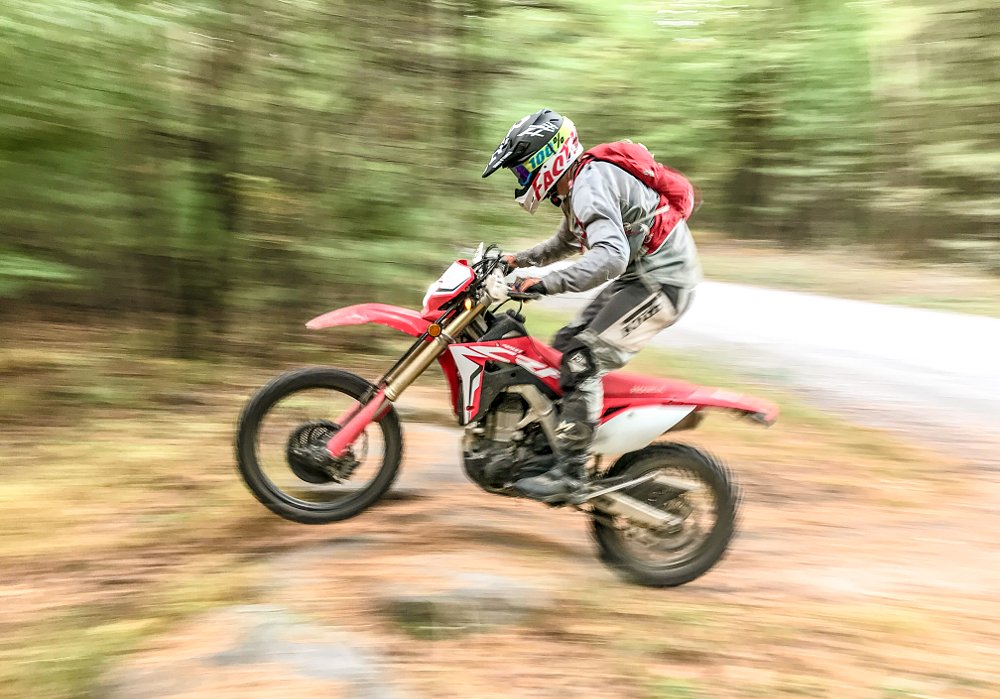
Conclusion
In the end, I decided the CRF450L perfectly bridges the gap between an enduro race bike and those heavier, clunkier dual-sports. It can tackle some serious and more technical single-track and feels more flickable and playful that the traditional dual-sports. On the other hand, it also handles time on the tarmac without punishing you or losing its composure. With the right tires on the CRF450L, you can easily hop on the highway and put some down some miles. It has a top speed of 90 mph and it doesn’t feel like it’s going to explode doing 60 mph down the road. I would probably get a more comfortable seat if your 450 was routinely on the tarmac for any prolonged amount of time, but mechanically it can certainly handle highway duty. I can’t quite say the same for my street-legal 300.
I think for the average to above-average off-road rider, the CRF450L provides a lot of versatility for riders who want street-legal capability and off-road competence, too.
For me, personally, I'm a little more focused and I plan to do a lot of racing this year, so I’m sticking with Team Orange, for now. But I’ll continue to sing the CRF450L’s praises when I’m trading stories with my fellow riders.
















